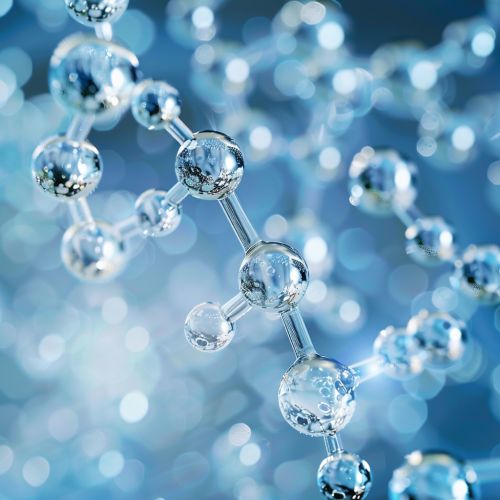H2CO3
Introduction
H2CO3, also known as carbonic acid, is a weak acid which is formed in solution when carbon dioxide (CO2) is dissolved in water. This compound plays a crucial role in many biological processes and is a key component in the carbon cycle. It is also a significant factor in the acid-base homeostasis of the body, and in the transport of carbon dioxide out of the body.


Structure and Properties
Carbonic acid is a diprotic acid, meaning it can donate two protons (H+ ions), one at a time. The first dissociation, or ionization, is a reversible reaction in which H2CO3 becomes a bicarbonate ion (HCO3-) and a hydrogen ion (H+). The second dissociation, which is also reversible, results in a carbonate ion (CO3 2-) and another H+ ion.
The structure of carbonic acid consists of a carbon atom which is doubly bonded to an oxygen atom and singly bonded to two hydroxyl (OH) groups. This structure allows it to act as a weak acid in solution.
Role in Biological Processes
In biological systems, carbonic acid plays a critical role in respiration and the transport of carbon dioxide. In the red blood cells, carbon dioxide (CO2) reacts with water (H2O) to form carbonic acid. This reaction is catalyzed by the enzyme carbonic anhydrase. The carbonic acid quickly dissociates into a bicarbonate ion and a hydrogen ion.
The bicarbonate ion is transported out of the red blood cell and into the plasma, while the hydrogen ion remains inside the red blood cell. This process is important for maintaining the acid-base balance in the body and for transporting carbon dioxide from the tissues to the lungs, where it is exhaled.
Role in Environmental Processes
Carbonic acid is a key component in the carbon cycle, particularly in the processes of weathering and ocean acidification. It is formed when atmospheric carbon dioxide dissolves in water, and it can react with minerals to form bicarbonates and carbonates, which are then transported to the oceans.
In the oceans, carbonic acid can react with carbonate ions to form bicarbonate ions, a process which reduces the availability of carbonate ions for shell-building organisms such as corals and shellfish. This process, known as ocean acidification, is a major concern in the context of increasing atmospheric carbon dioxide levels due to human activities.
Industrial Applications
Carbonic acid has several industrial applications. It is used in the production of soft drinks and other carbonated beverages, where it provides the characteristic fizz. It is also used in fire extinguishers, as it can effectively suffocate fires by depriving them of oxygen.
Safety and Health Effects
While carbonic acid is generally considered safe and is a natural part of many biological processes, exposure to high concentrations can be harmful. Inhalation of high concentrations of carbonic acid can lead to respiratory problems, while ingestion can cause digestive issues.
